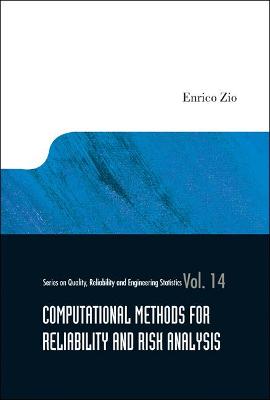Series on Quality, Reliability and Engineering Statistics
4 primary works
Book 13
Introduction To The Basics Of Reliability And Risk Analysis, An
by Enrico Zio
Published 1 March 2007
The necessity of expertise for tackling the complicated and multidisciplinary issues of safety and risk has slowly permeated into all engineering applications so that risk analysis and management has gained a relevant role, both as a tool in support of plant design and as an indispensable means for emergency planning in accidental situations. This entails the acquisition of appropriate reliability modeling and risk analysis tools to complement the basic and specific engineering knowledge for the technological area of application.Aimed at providing an organic view of the subject, this book provides an introduction to the principal concepts and issues related to the safety of modern industrial activities. It also illustrates the classical techniques for reliability analysis and risk assessment used in current practice.
Book 14
This book illustrates a number of modelling and computational techniques for addressing relevant issues in reliability and risk analysis. In particular, it provides: i) a basic illustration of some methods used in reliability and risk analysis for modelling the stochastic failure and repair behaviour of systems, e.g. the Markov and Monte Carlo simulation methods; ii) an introduction to Genetic Algorithms, tailored to their application for RAMS (Reliability, Availability, Maintainability and Safety) optimization; iii) an introduction to key issues of system reliability and risk analysis, like dependent failures and importance measures; and iv) a presentation of the issue of uncertainty and of the techniques of sensitivity and uncertainty analysis used in support of reliability and risk analysis.The book provides a technical basis for senior undergraduate or graduate courses and a reference for researchers and practitioners in the field of reliability and risk analysis. Several practical examples are included to demonstrate the application of the concepts and techniques in practice.
Book 15
Enrico Zio's Reliability & Risk Collection
by Piero Baraldi, Enrico Zio, and Francesco Cadini
Published 1 April 2011
Reliability and safety are fundamental attributes of any modern technological system. To achieve this, diverse types of protection barriers are placed as safeguards from the hazard posed by the operation of the system, within a multiple-barrier design concept. These barriers are intended to protect the system from failures of any of its elements, hardware, software, human and organizational.Correspondingly, the quantification of the probability of failure of the system and its protective barriers, through reliability and risk analyses, becomes a primary task in both the system design and operation phases.This exercise book serves as a complementary tool supporting the methodology concepts introduced in the books ';An introduction to the basics of reliability and risk analysis'; and ';Computational methods for reliability and risk analysis'; by Enrico Zio, in that it gives an opportunity to familiarize with the applications of classical and advanced techniques of reliability and risk analysis.
Book 15
Basics Of Reliability And Risk Analysis: Worked Out Problems And Solutions
by Piero Baraldi, Enrico Zio, and Francesco Cadini
Published 7 April 2011
Reliability and safety are fundamental attributes of any modern technological system. To achieve this, diverse types of protection barriers are placed as safeguards from the hazard posed by the operation of the system, within a multiple-barrier design concept. These barriers are intended to protect the system from failures of any of its elements, hardware, software, human and organizational.Correspondingly, the quantification of the probability of failure of the system and its protective barriers, through reliability and risk analyses, becomes a primary task in both the system design and operation phases.This exercise book serves as a complementary tool supporting the methodology concepts introduced in the books ';An introduction to the basics of reliability and risk analysis'; and ';Computational methods for reliability and risk analysis'; by Enrico Zio, in that it gives an opportunity to familiarize with the applications of classical and advanced techniques of reliability and risk analysis.



